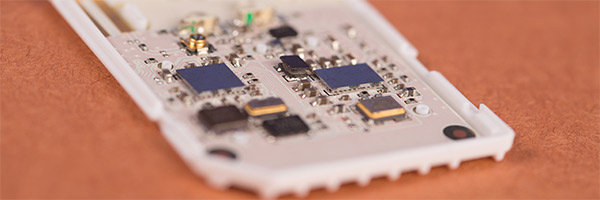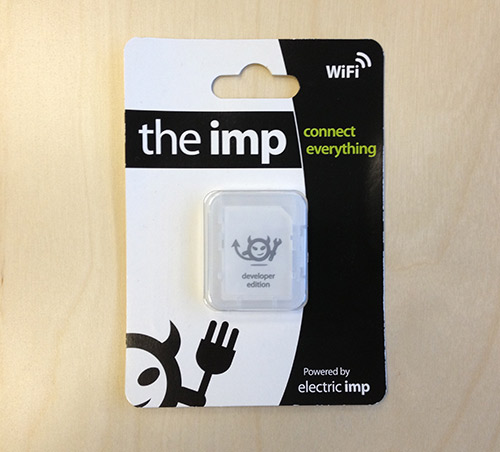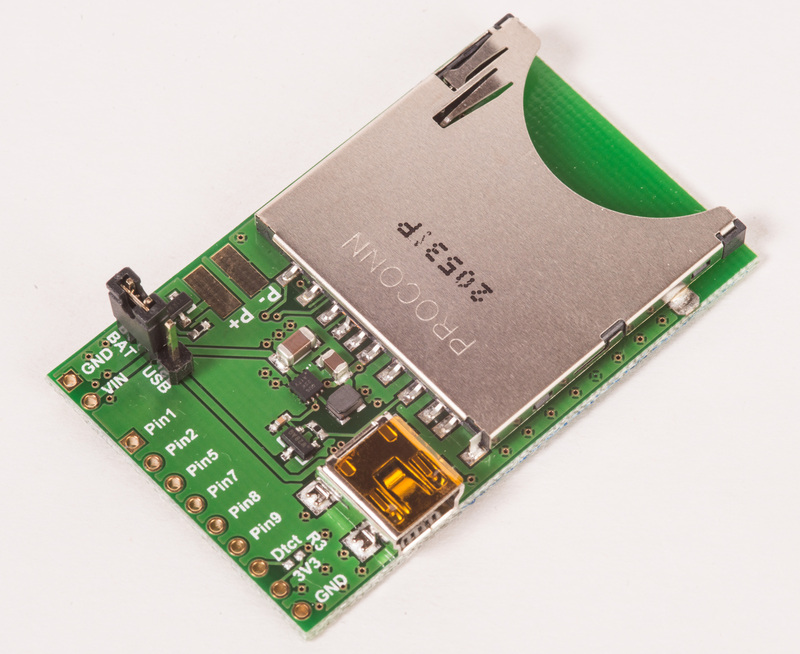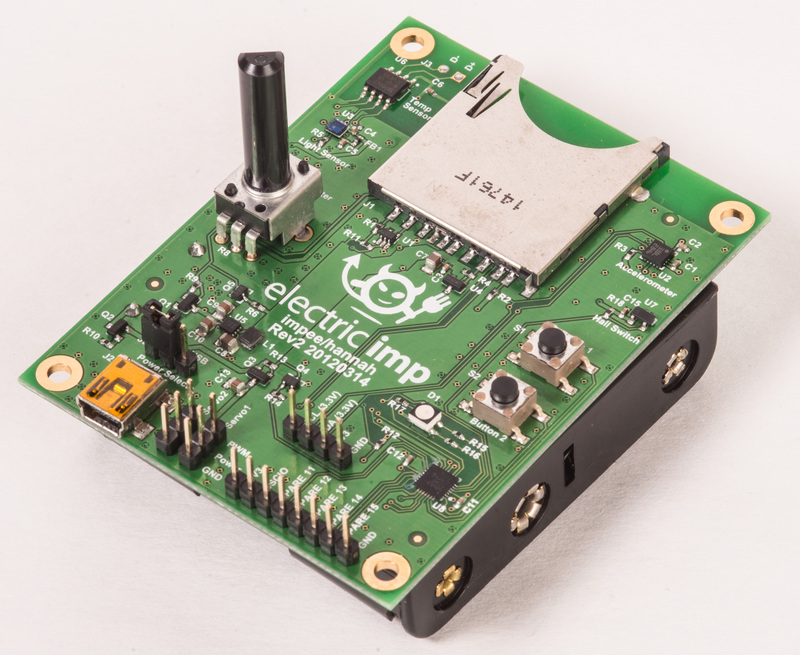ARM + WiFi in SD card format
Today, digging on the Internet found an interesting thing: Electric Imp .
Is a ready-made module on board:
ARM Cortex M3 (which one hasn’t been determined yet) and WiFi

Iron
Since the SD card form factor is selected, we have only 9 pins for power supply, 1 for the chip ID, we have only 6 for the user.
All of them can be GPIO, ADC inputs, independent PWM channels. 3 UART, 2 SPI, 2 I2C (master and slave), 2 D / A converters, 1 pin can be used for external interrupts when removing from DeepSleep mode.
')
If you need a lot of GPIO - the authors recommend using I2C GPIO extenders.
power sensitivity of the WiFi receiver -114 dB
power usage
The module itself switches between different modes and reduces / increases the frequency depending on the load.
In idle mode, when connected to a WiFi network, consumption is about 10mA,
In consumption mode, peak currents up to 250mA.
In DeepSleep mode, the consumption is about 6µA - output by timer or external interrupt. Exit from the mode takes about 1 s, tk before the beginning of the code execution the module is connected to the network.
Soft
The software part is not so clear, although for some, the choice of developers may be a plus.
We are invited to write to the IDE online in C / Java-like language Squirrel , flash the module via the Internet (this is where the ID chip comes in handy) and receive logs in the browser.
To configure the network, the authors also found an unusual solution -
they wrote an application on iOS / Android (I hope it will appear for the PC), in the application you enter the network settings and leaning the card against the display (an optical sensor is installed on the end of the card) transfer the settings to your module by flashing the display.
It looks quite interesting, how much does it all cost?
The output of the module and debug boards is scheduled for the end of July.
Card $ 25

The easiest debug board $ 7
SD slot, powered by USB or external source, pins brought out:

Debug board with full minced meat $ 25
On board: a potentiometer, 2 buttons, an RGB sensor, a temperature sensor, a 3-axis accelerometer, a Hall sensor, 2 connectors for servi, all contacts are on a battery case pins:

Arduino with SD slot $ 20
A regular Arduino Uno with an SD card output on board atmega will ship with a modified Arduino IDE (so that fans of twitter / mailboxes will save on Ethernet shields):

In an interview they promised to open all the sources after the launch of the series.
Prices are cool, it remains to wait for the exit and look at the strange PL.
To whom it is interesting, you can watch the promotional video:
The UPD module does not duplicate the EyeFi functionality; it cannot simply be inserted into the camera and loaded into the photo storage.
Is a ready-made module on board:
ARM Cortex M3 (which one hasn’t been determined yet) and WiFi

Iron
Since the SD card form factor is selected, we have only 9 pins for power supply, 1 for the chip ID, we have only 6 for the user.
All of them can be GPIO, ADC inputs, independent PWM channels. 3 UART, 2 SPI, 2 I2C (master and slave), 2 D / A converters, 1 pin can be used for external interrupts when removing from DeepSleep mode.
')
If you need a lot of GPIO - the authors recommend using I2C GPIO extenders.
power usage
The module itself switches between different modes and reduces / increases the frequency depending on the load.
In idle mode, when connected to a WiFi network, consumption is about 10mA,
In consumption mode, peak currents up to 250mA.
In DeepSleep mode, the consumption is about 6µA - output by timer or external interrupt. Exit from the mode takes about 1 s, tk before the beginning of the code execution the module is connected to the network.
Soft
The software part is not so clear, although for some, the choice of developers may be a plus.
We are invited to write to the IDE online in C / Java-like language Squirrel , flash the module via the Internet (this is where the ID chip comes in handy) and receive logs in the browser.
To configure the network, the authors also found an unusual solution -
they wrote an application on iOS / Android (I hope it will appear for the PC), in the application you enter the network settings and leaning the card against the display (an optical sensor is installed on the end of the card) transfer the settings to your module by flashing the display.
It looks quite interesting, how much does it all cost?
The output of the module and debug boards is scheduled for the end of July.
Card $ 25

The easiest debug board $ 7
SD slot, powered by USB or external source, pins brought out:

Debug board with full minced meat $ 25
On board: a potentiometer, 2 buttons, an RGB sensor, a temperature sensor, a 3-axis accelerometer, a Hall sensor, 2 connectors for servi, all contacts are on a battery case pins:

Arduino with SD slot $ 20
A regular Arduino Uno with an SD card output on board atmega will ship with a modified Arduino IDE (so that fans of twitter / mailboxes will save on Ethernet shields):

In an interview they promised to open all the sources after the launch of the series.
Prices are cool, it remains to wait for the exit and look at the strange PL.
To whom it is interesting, you can watch the promotional video:
The UPD module does not duplicate the EyeFi functionality; it cannot simply be inserted into the camera and loaded into the photo storage.
Source: https://habr.com/ru/post/148119/
All Articles